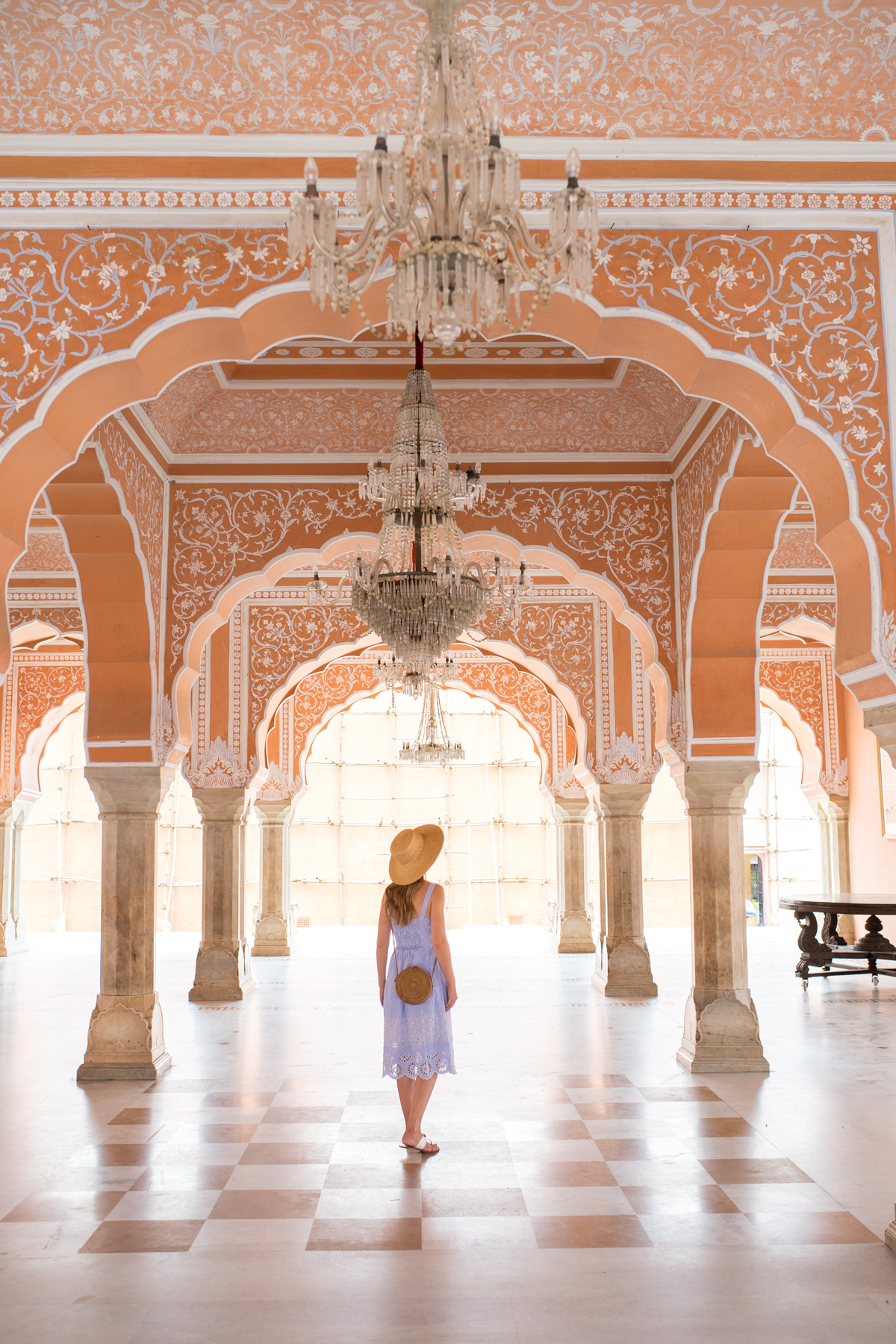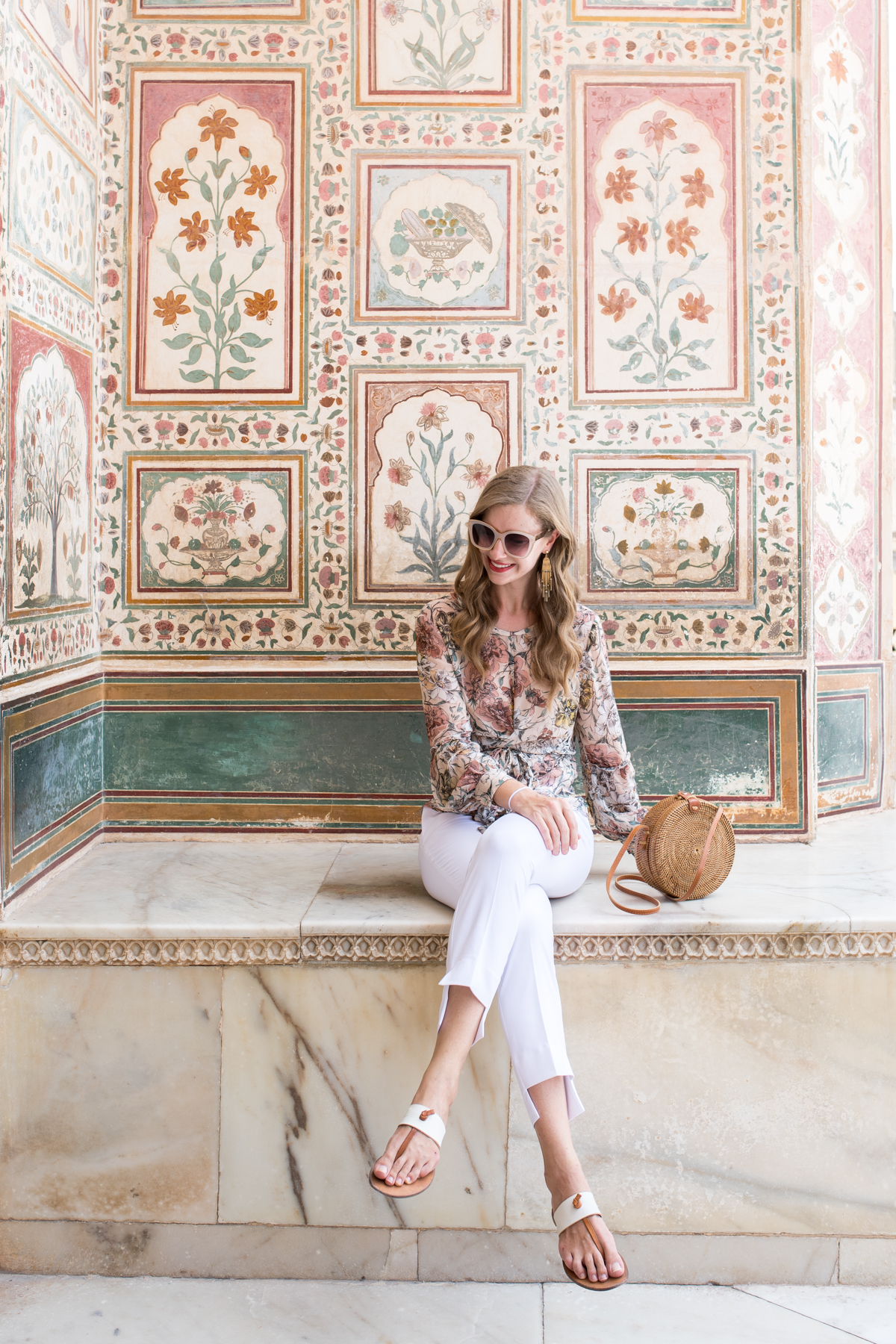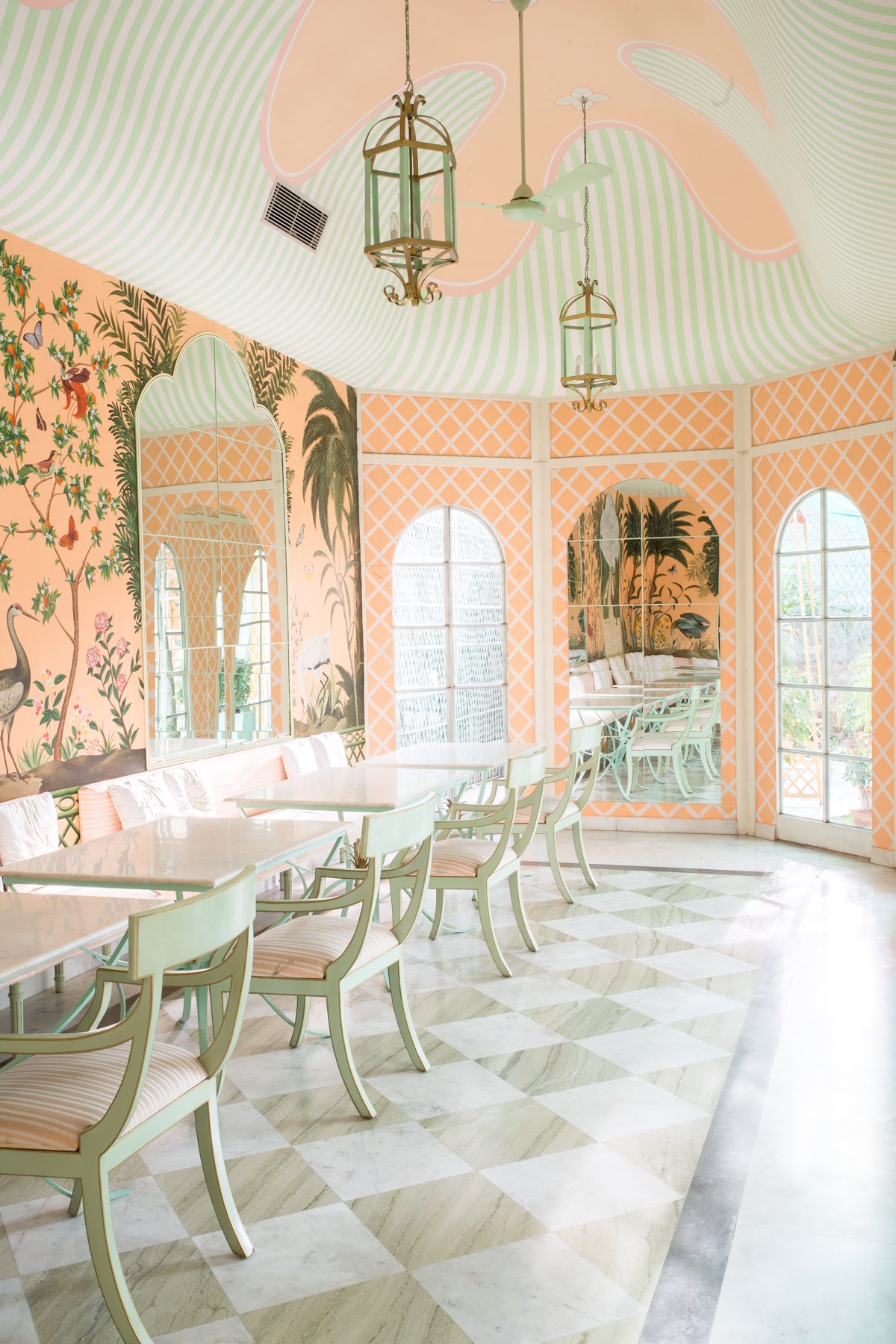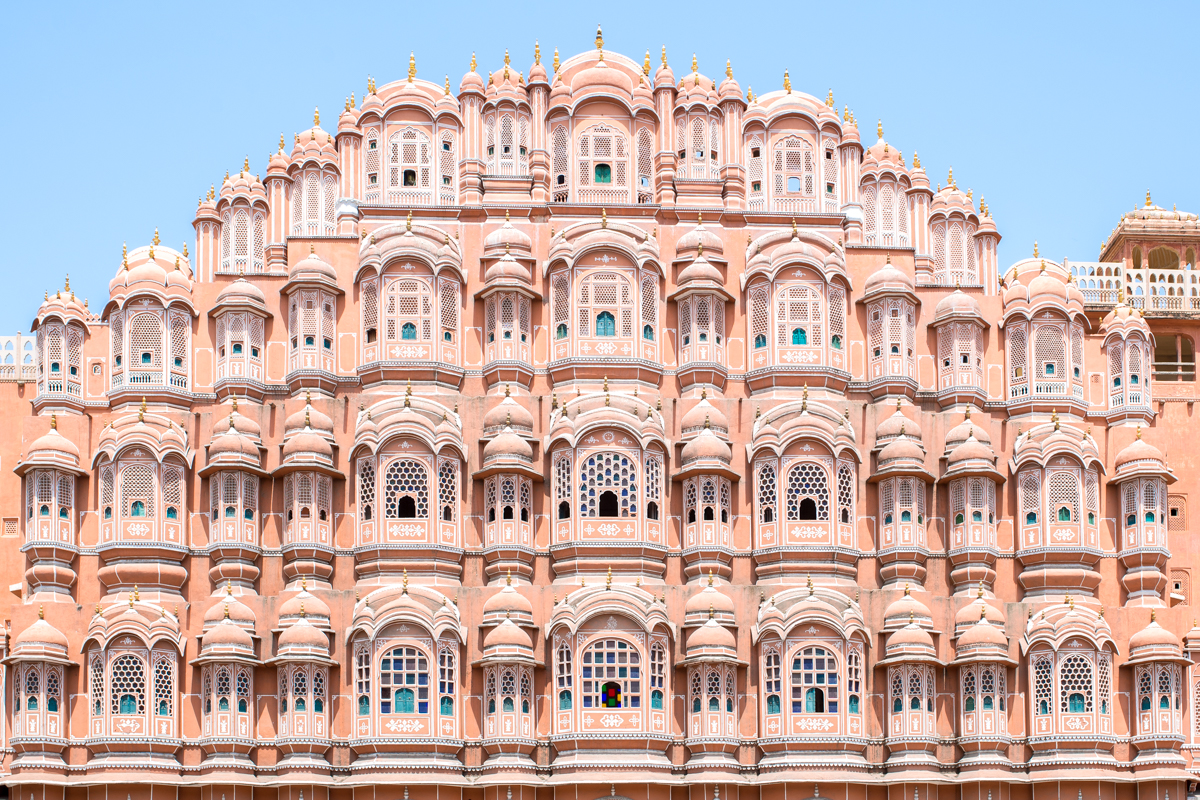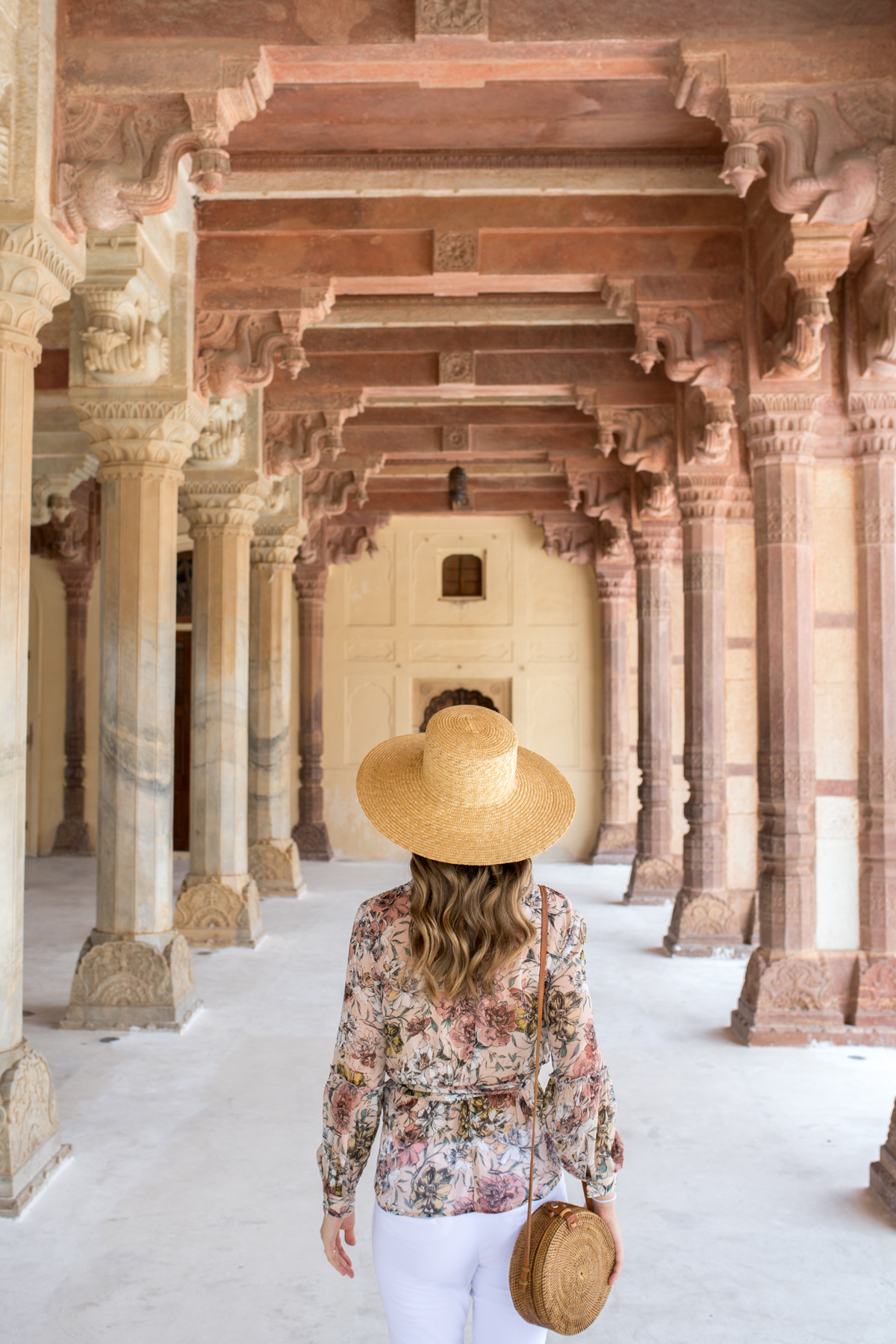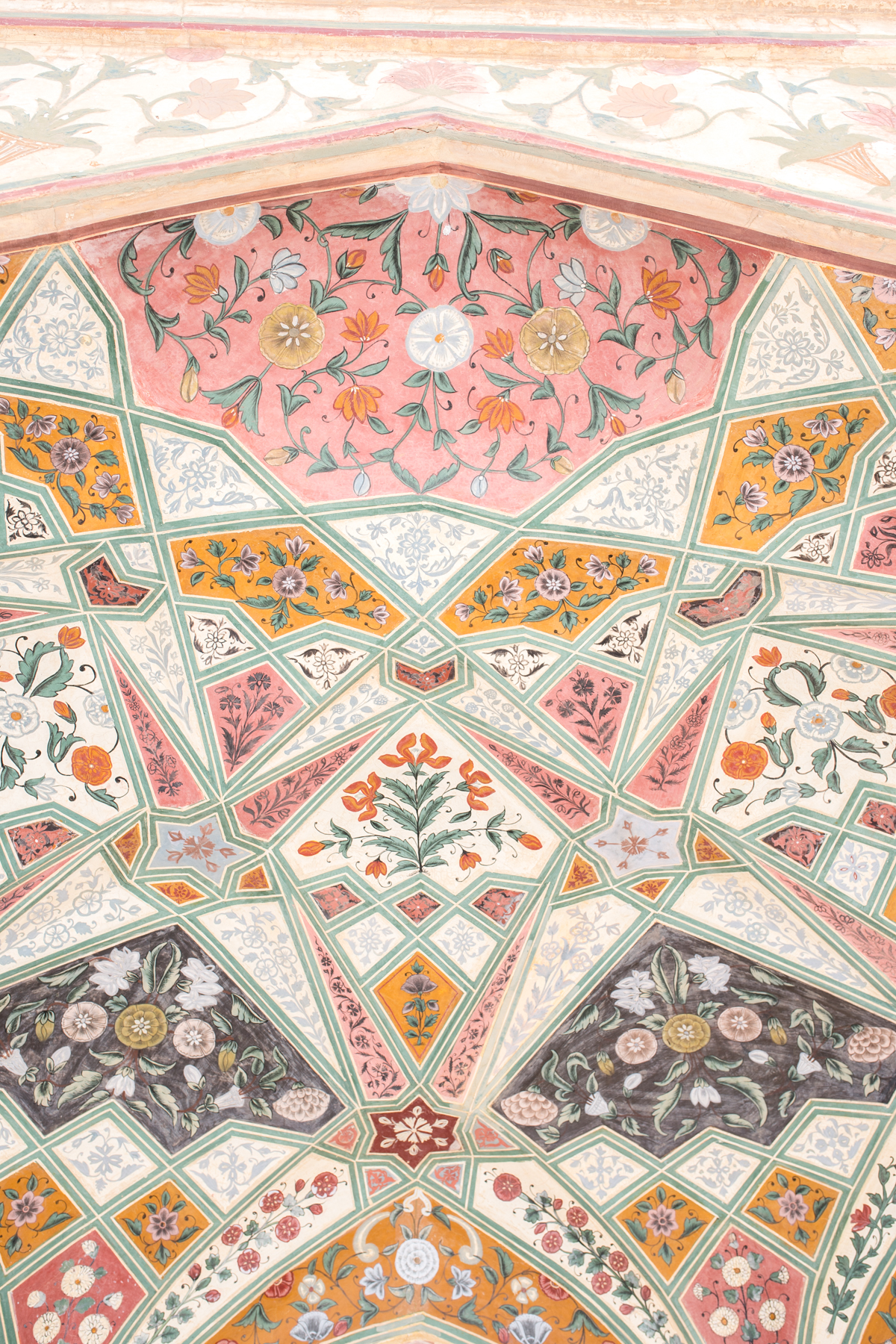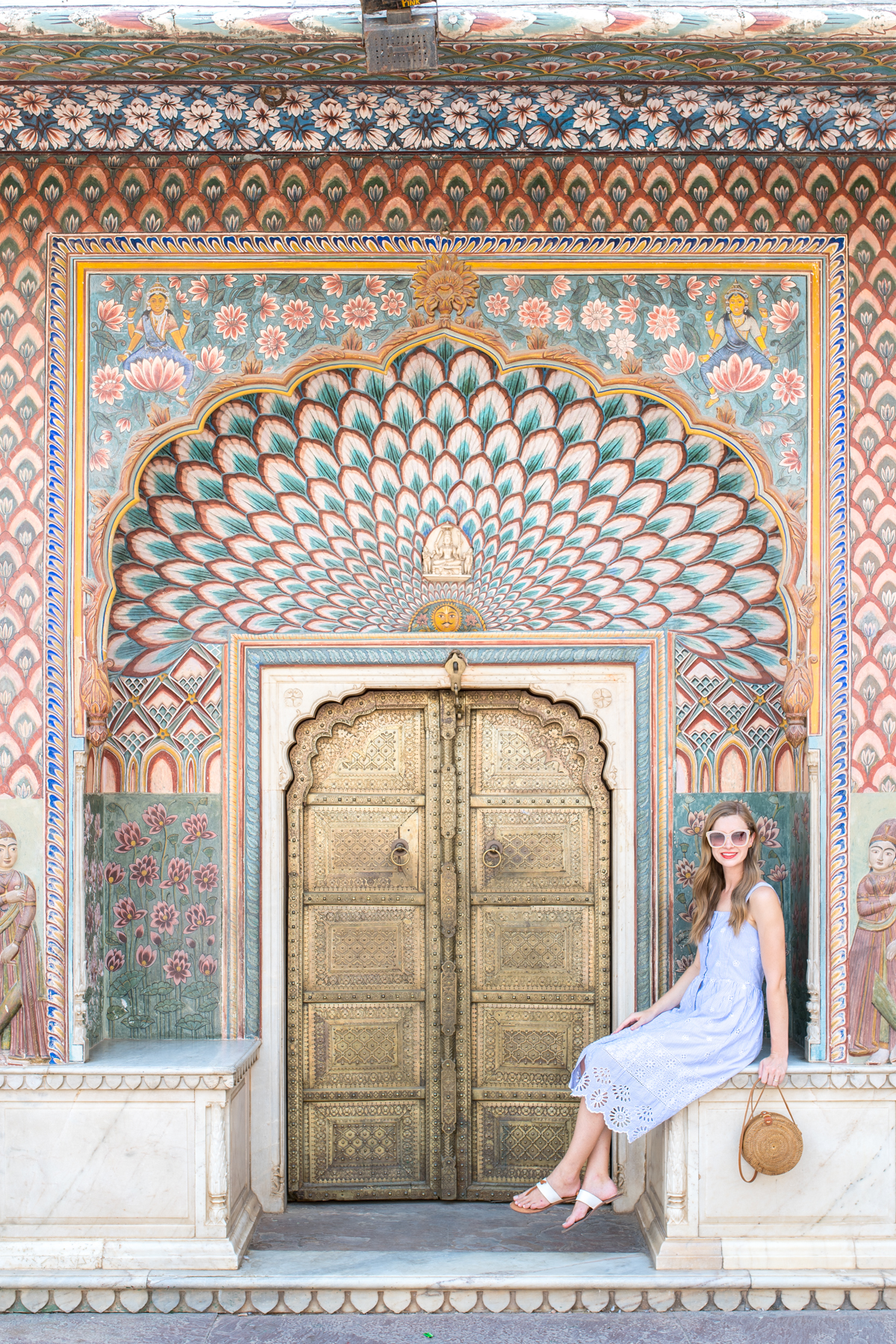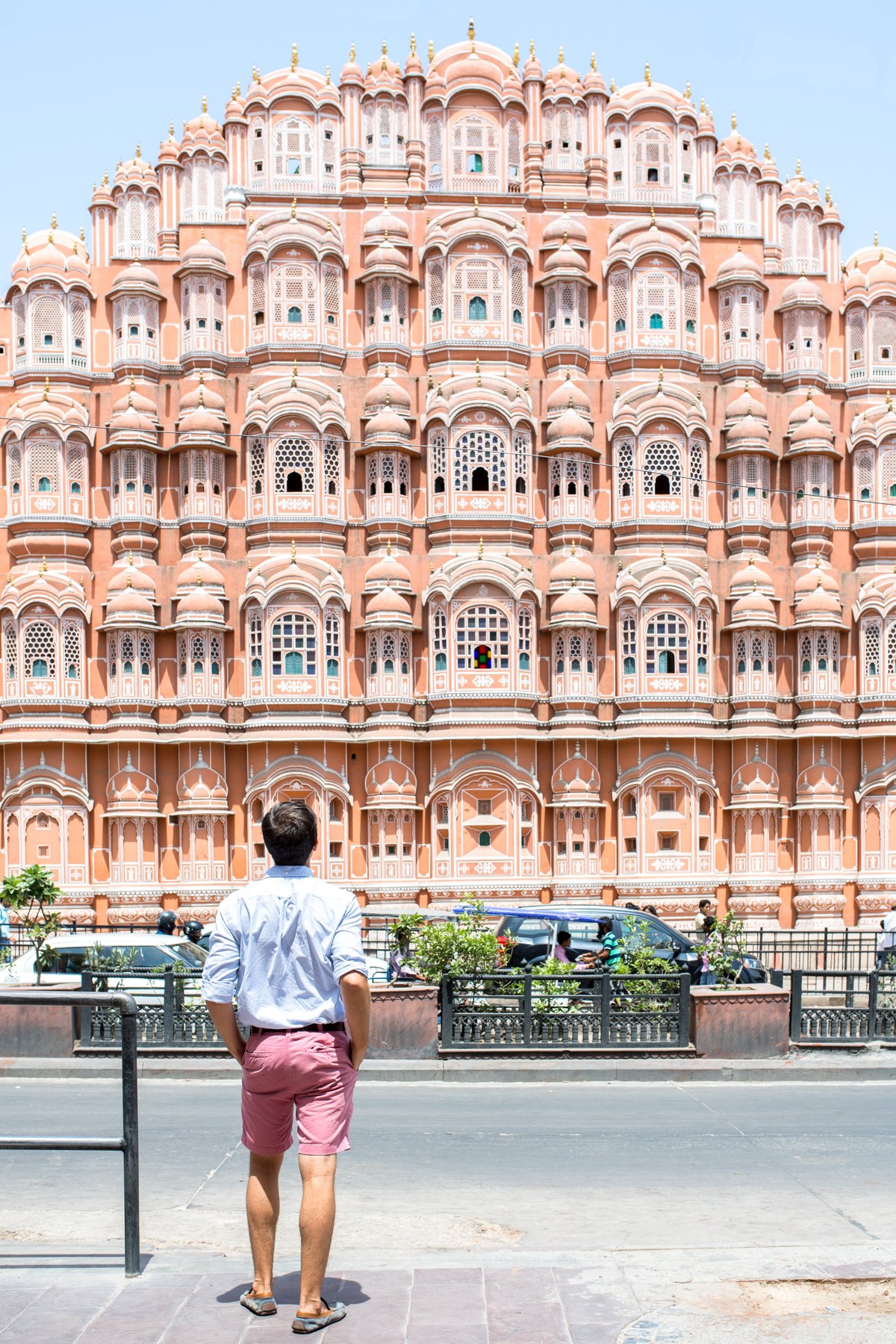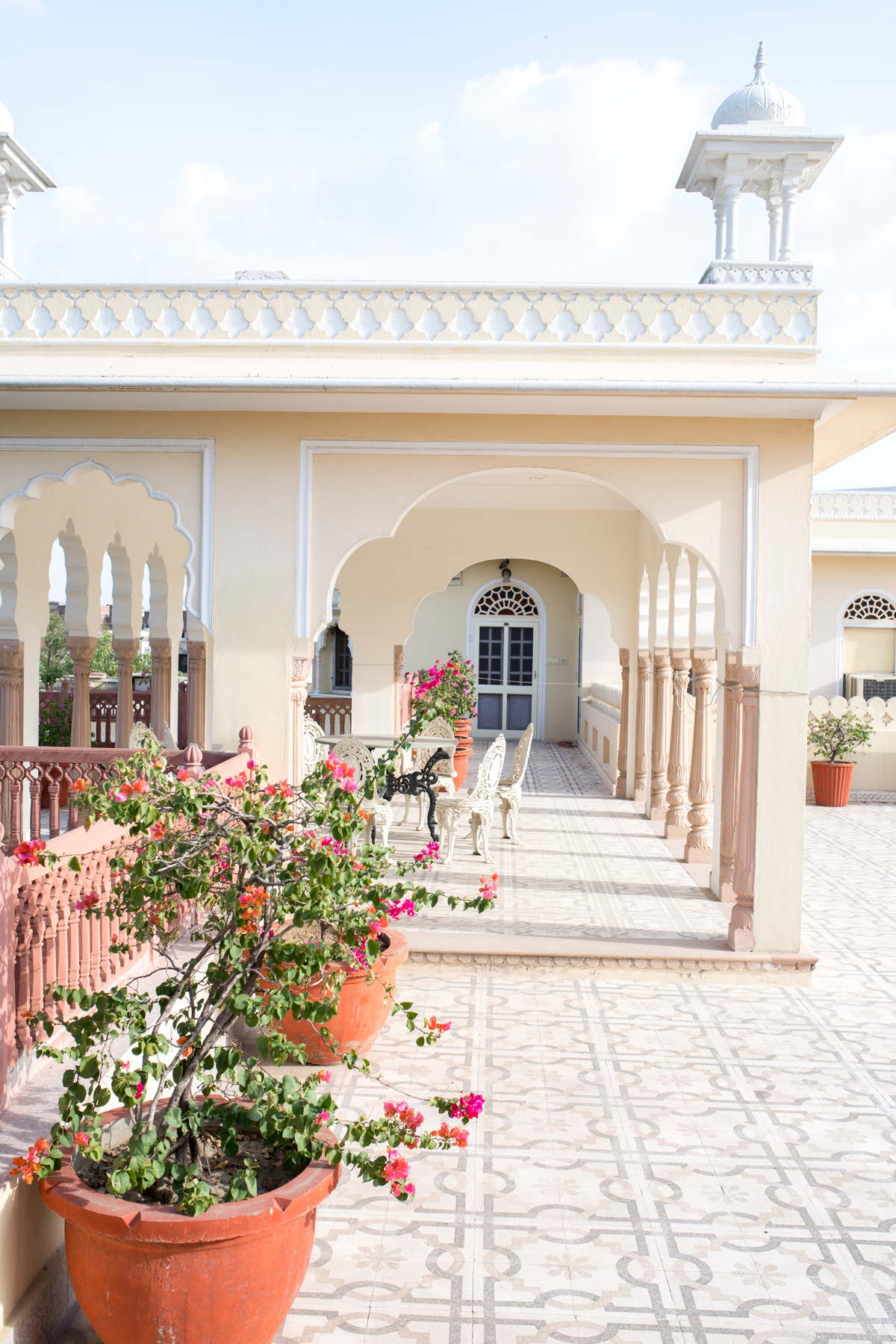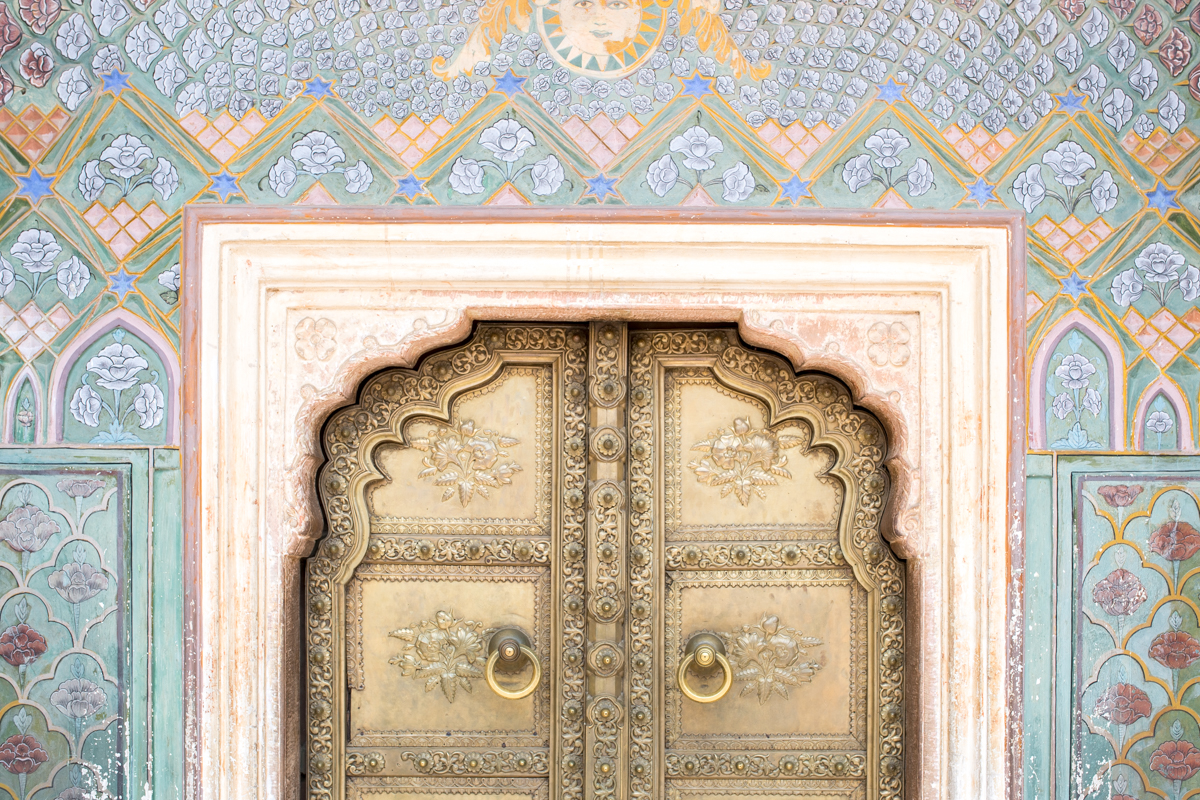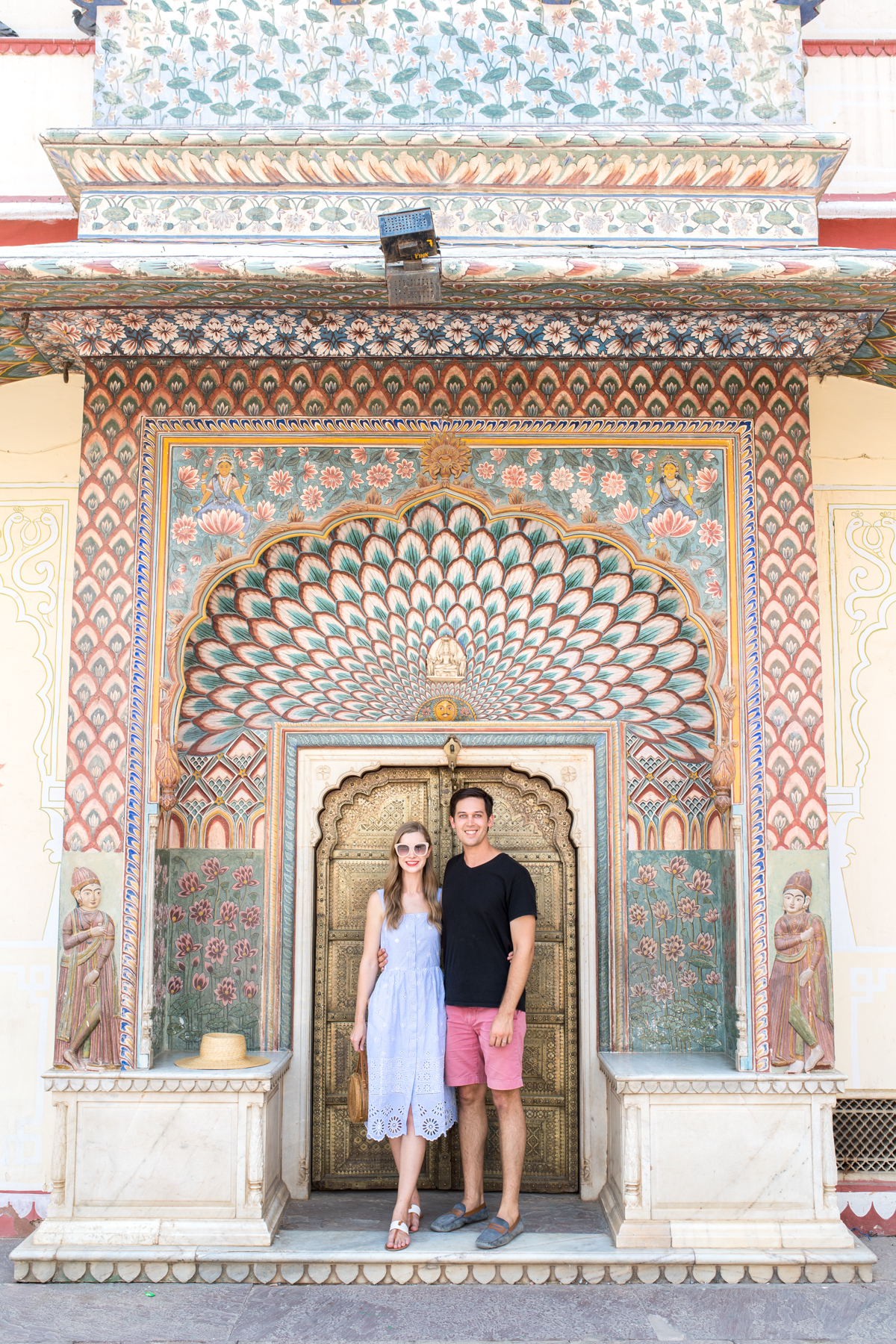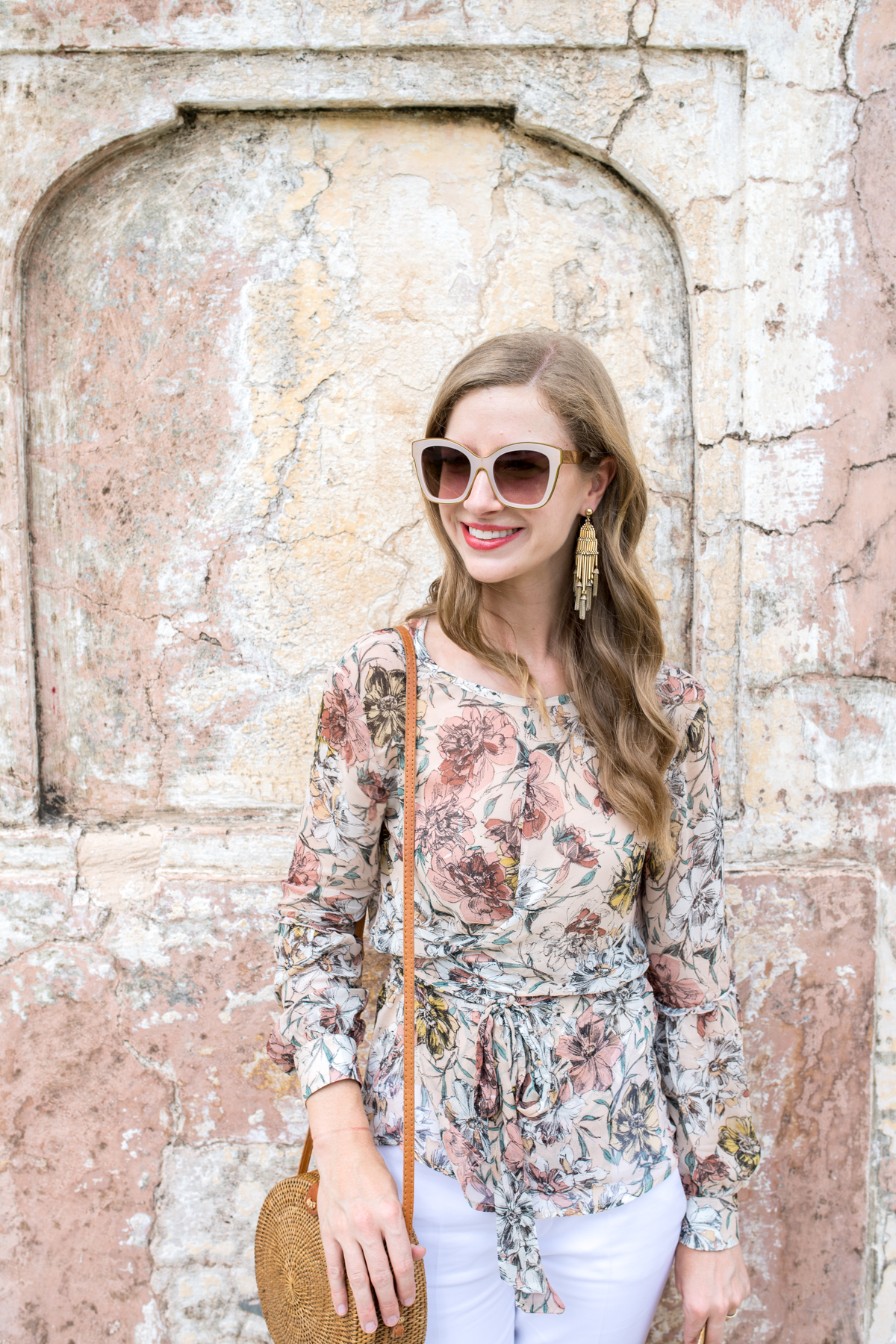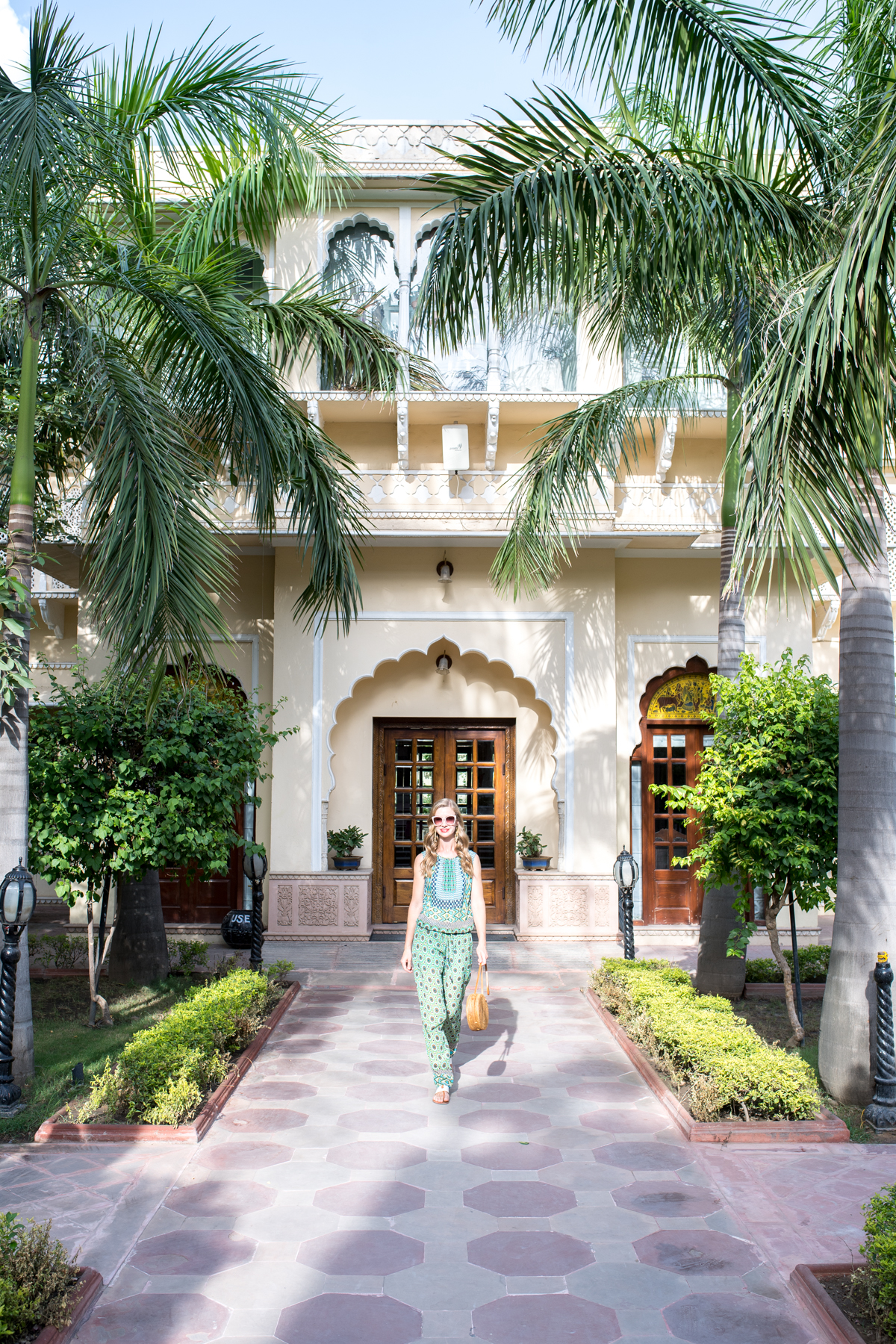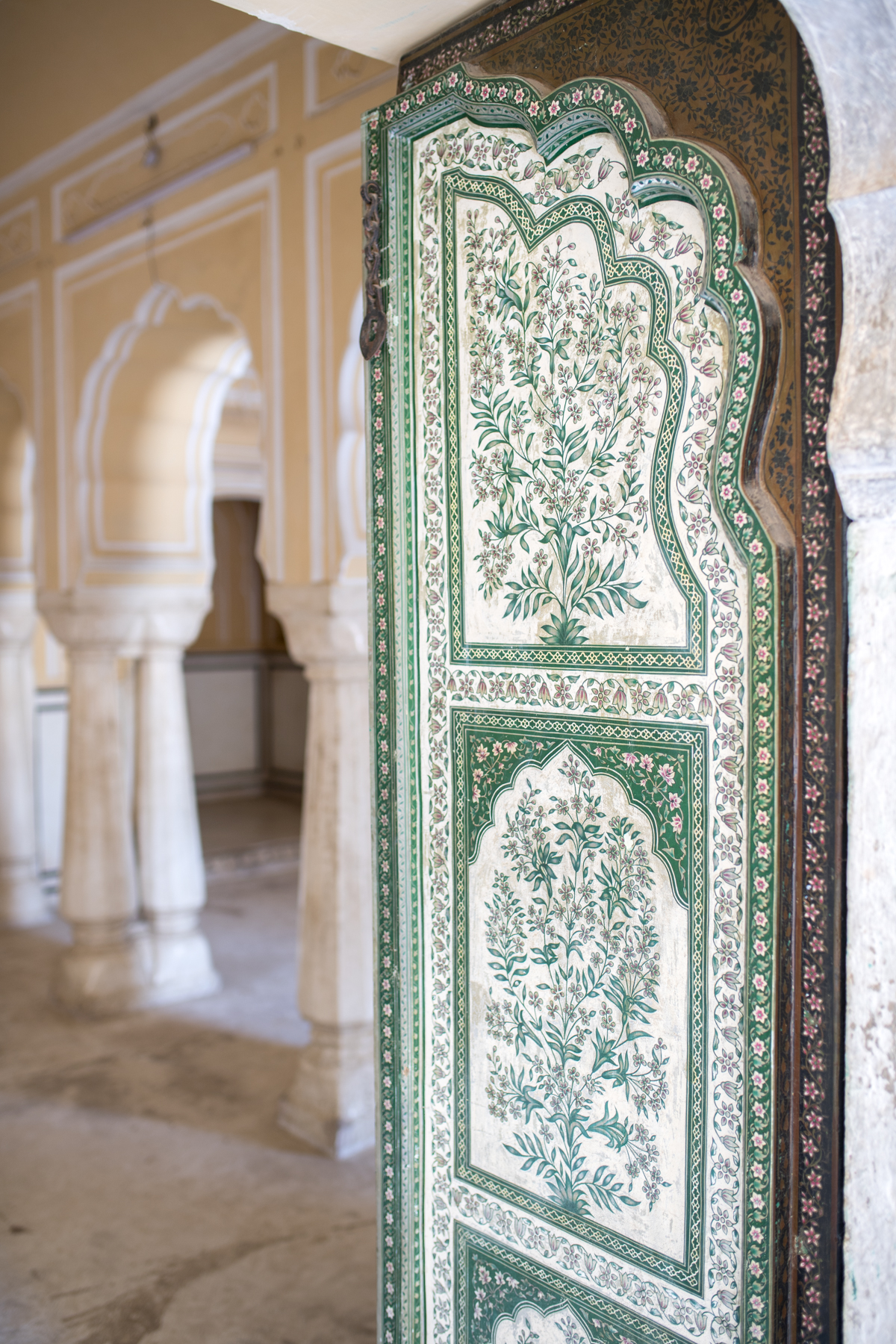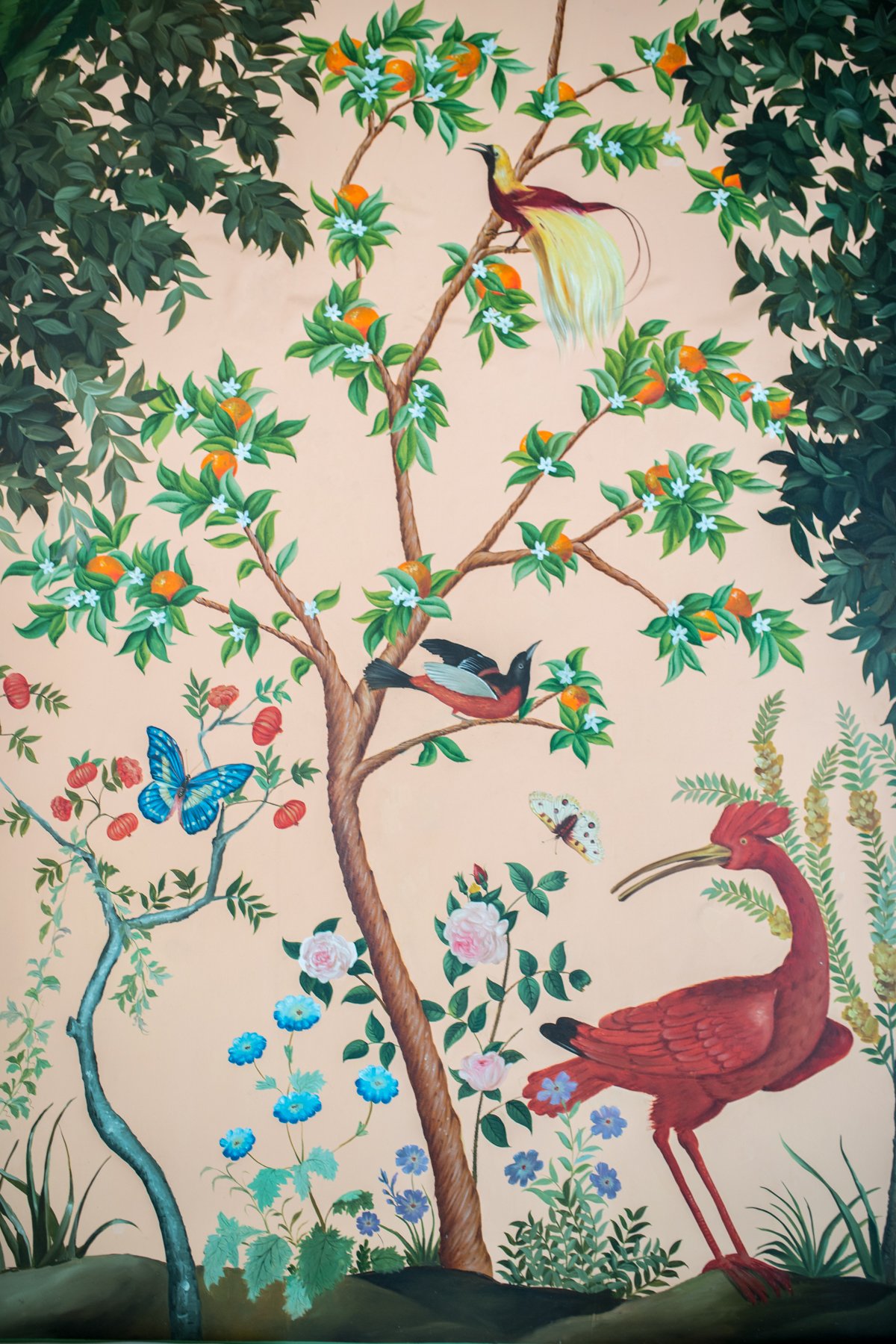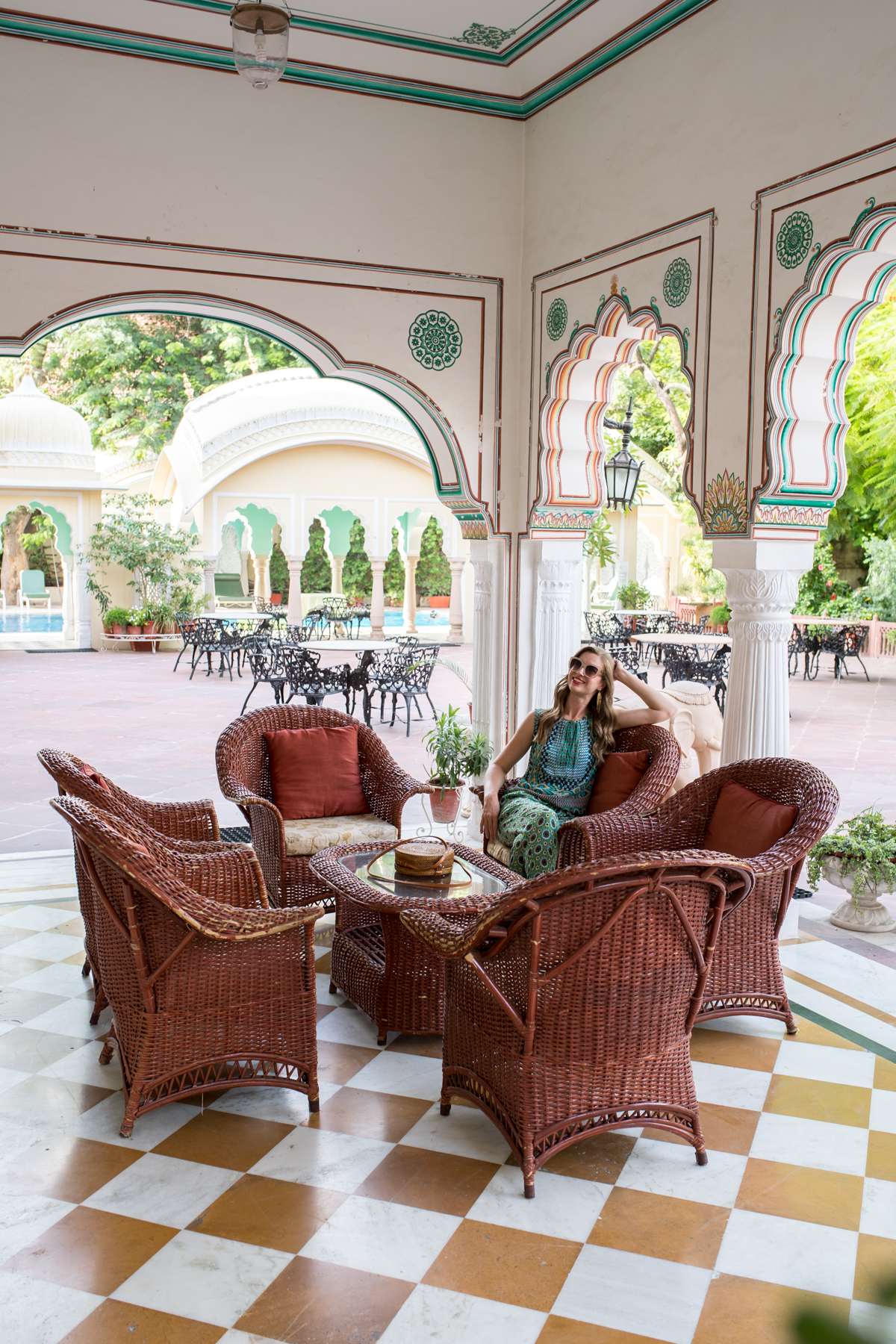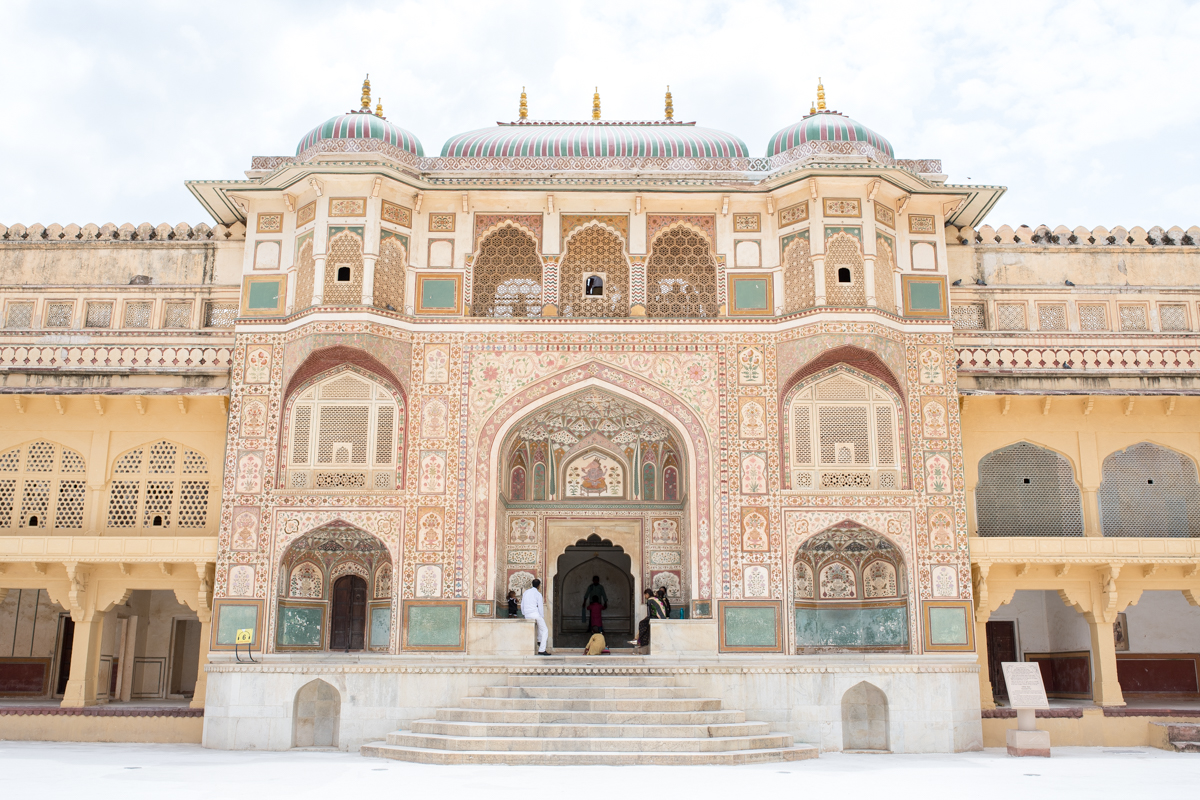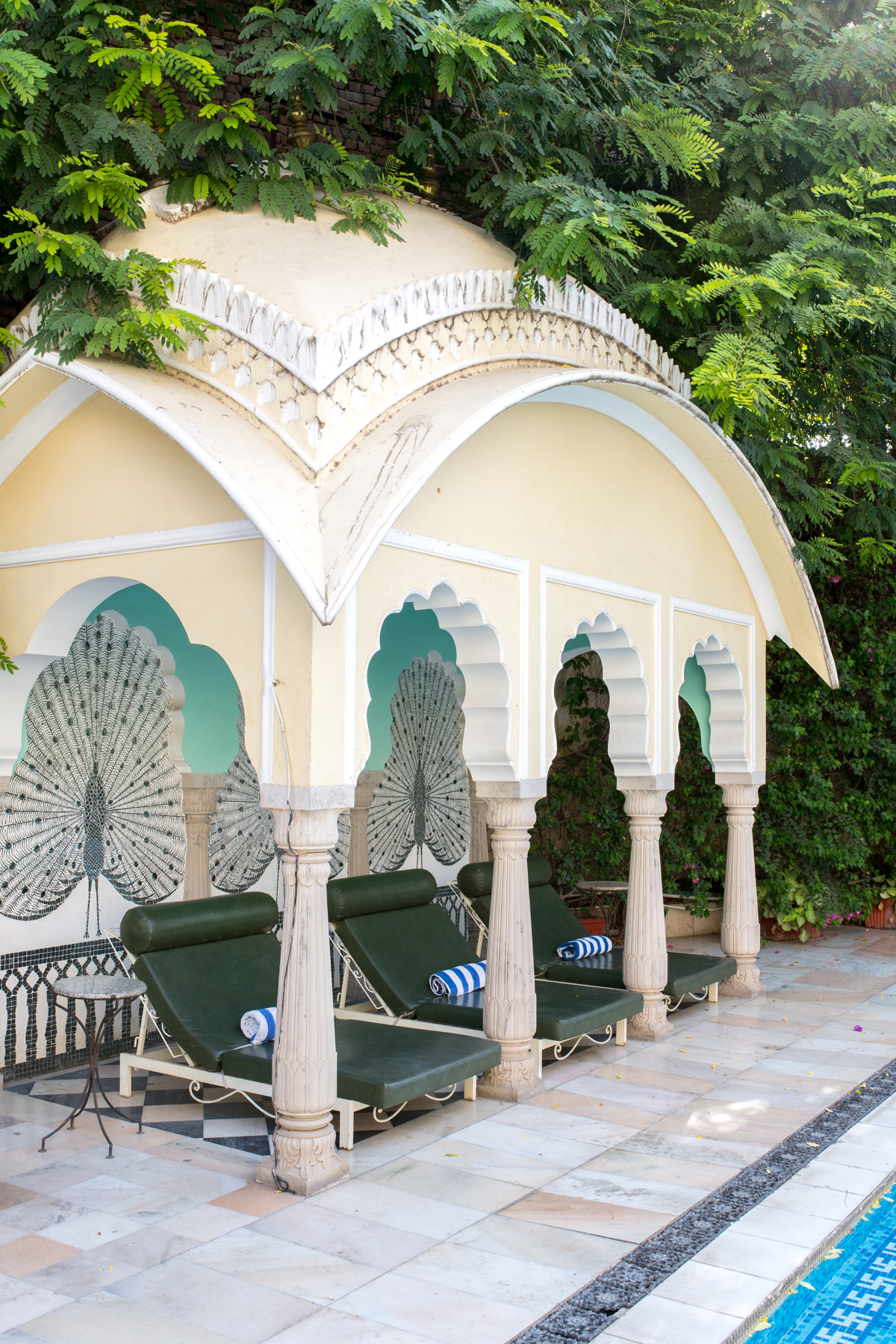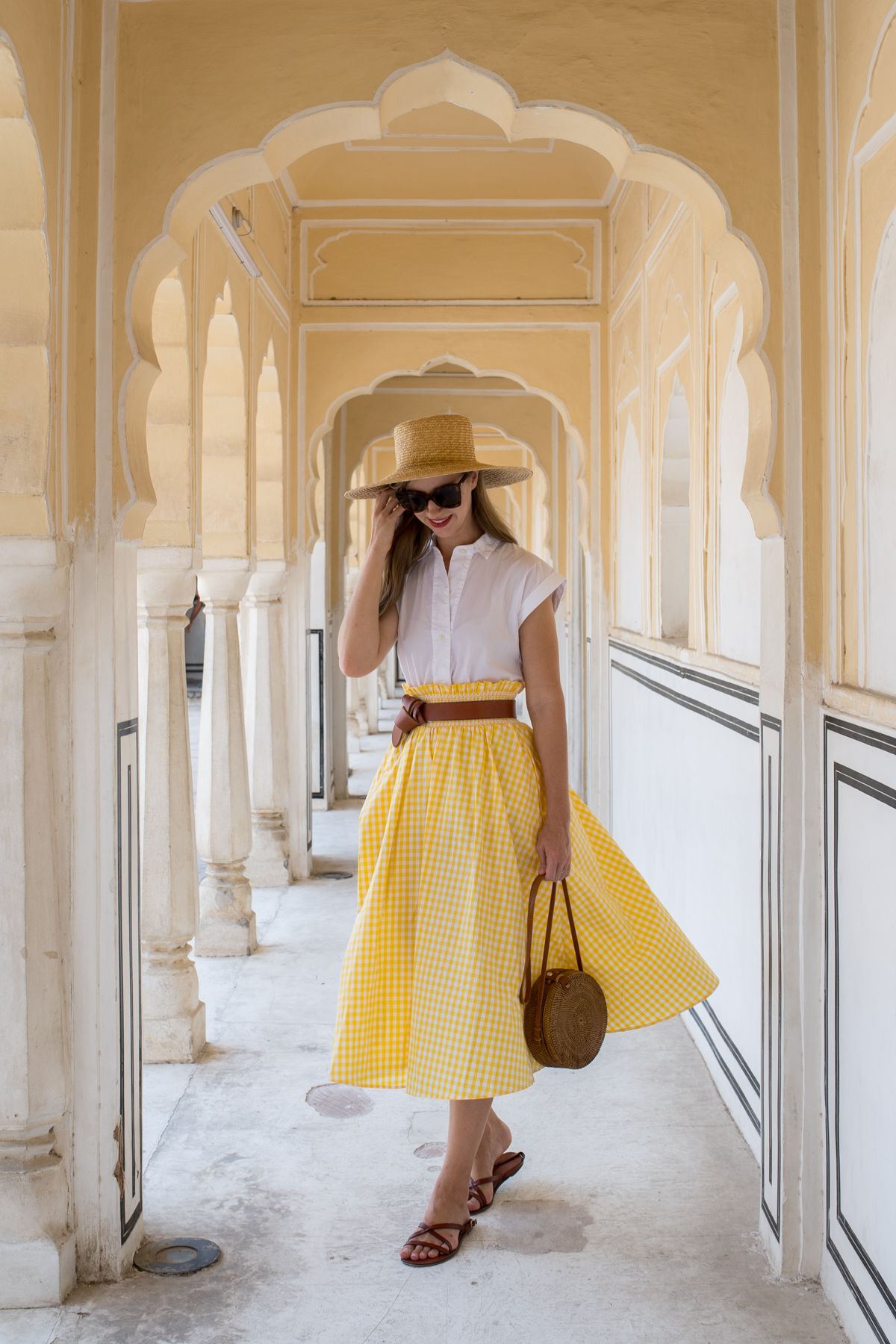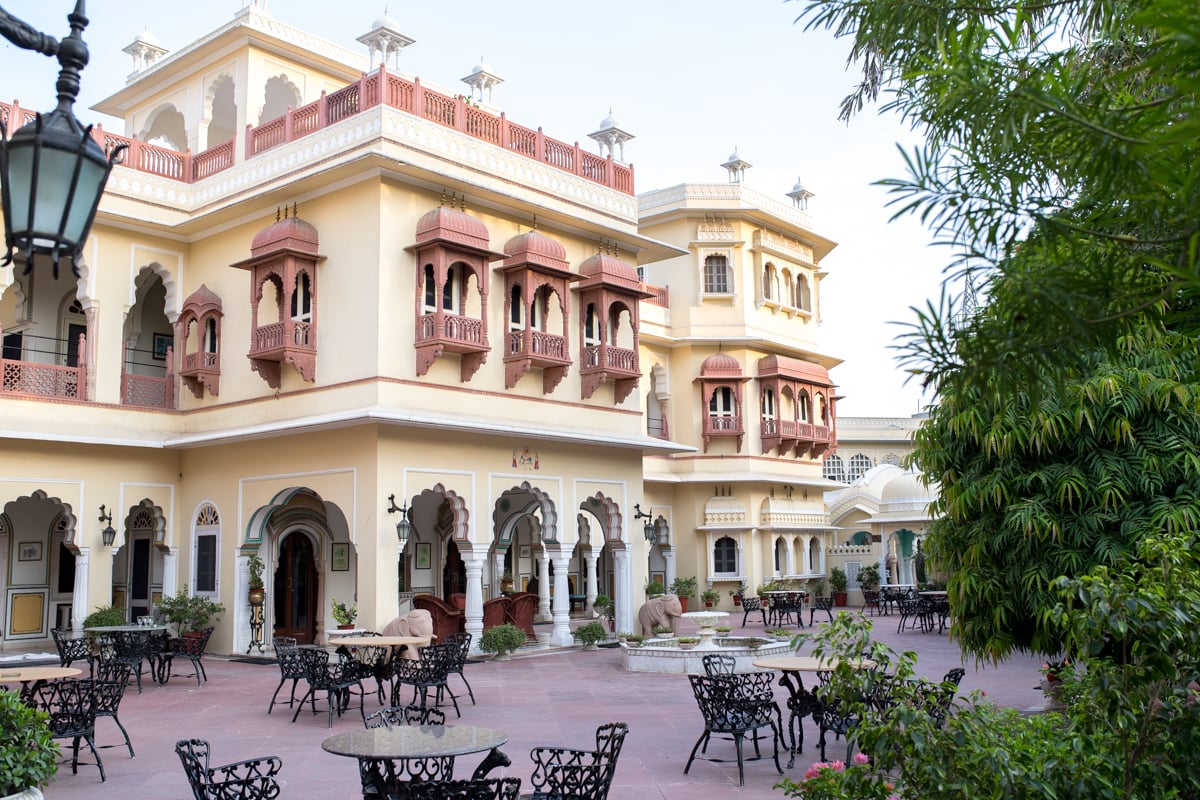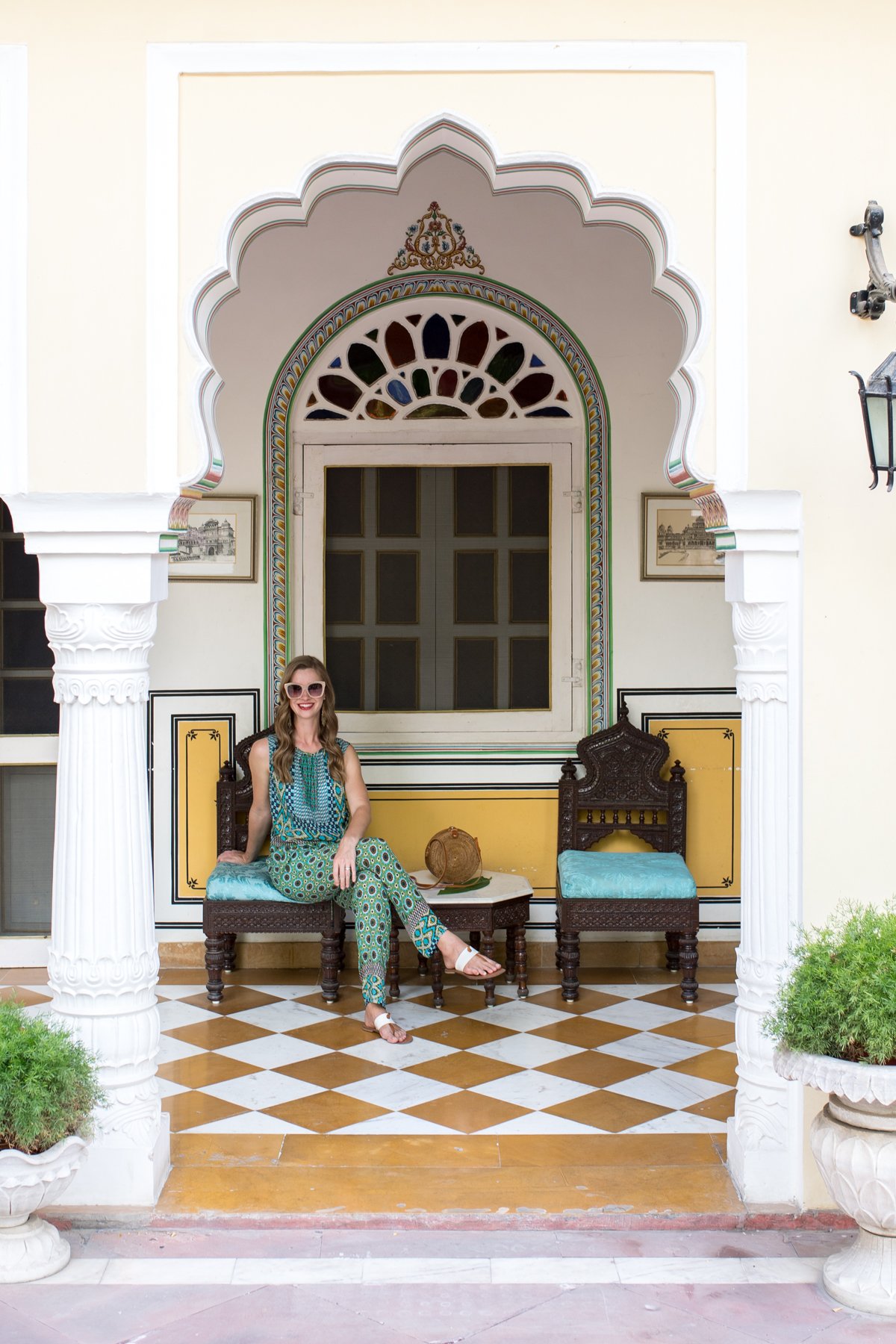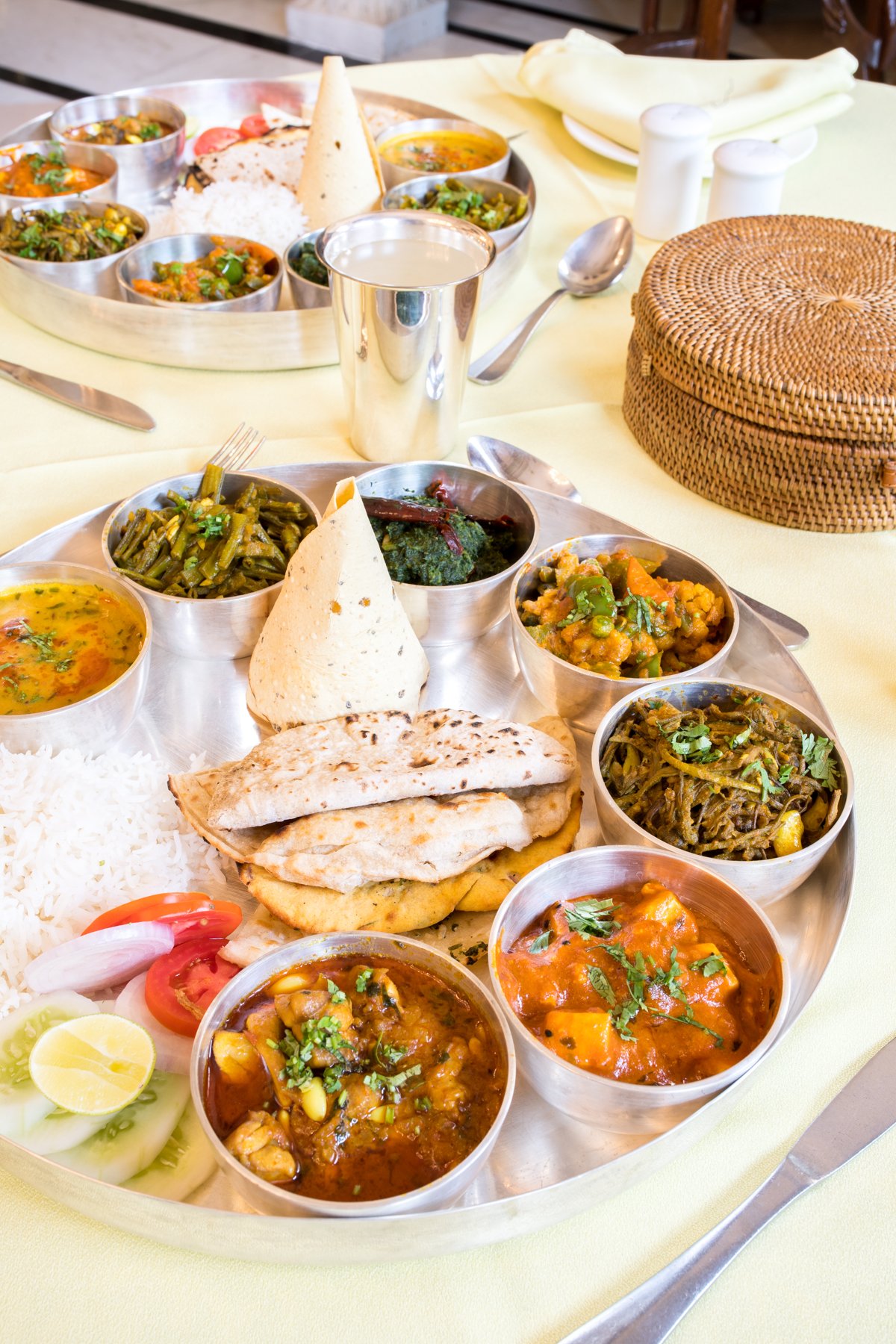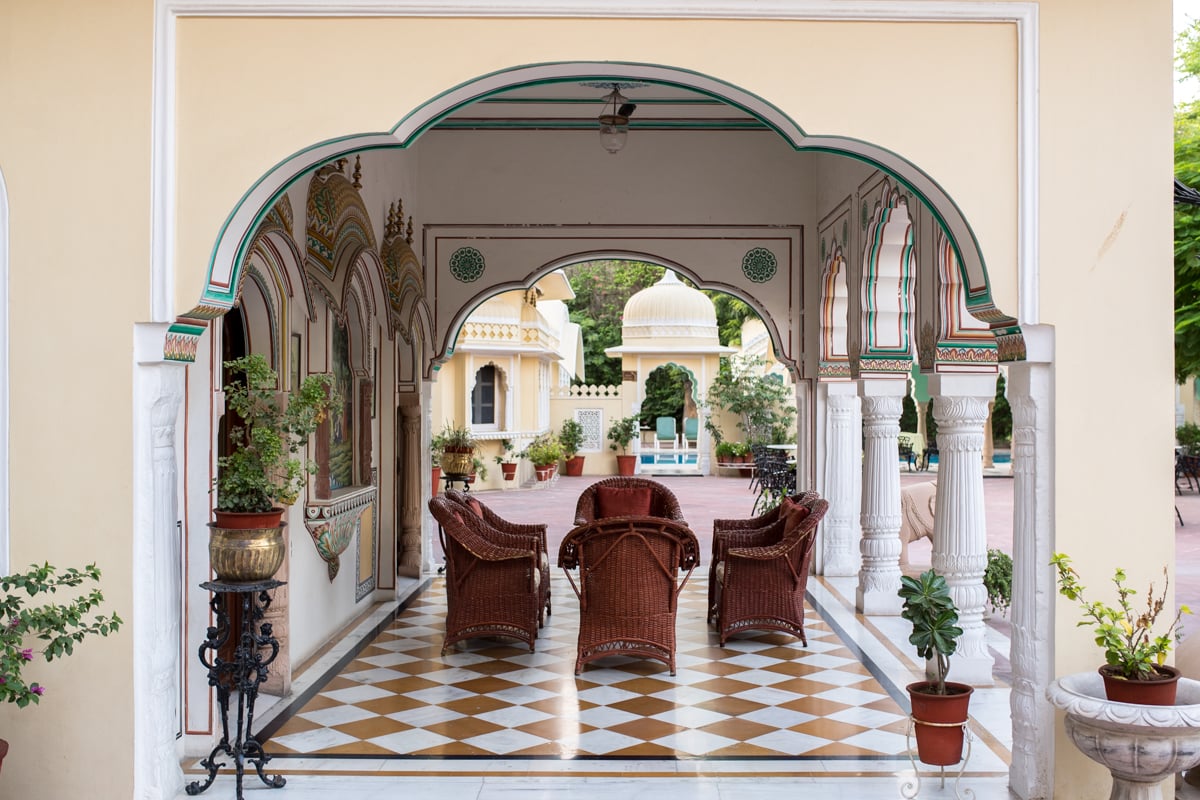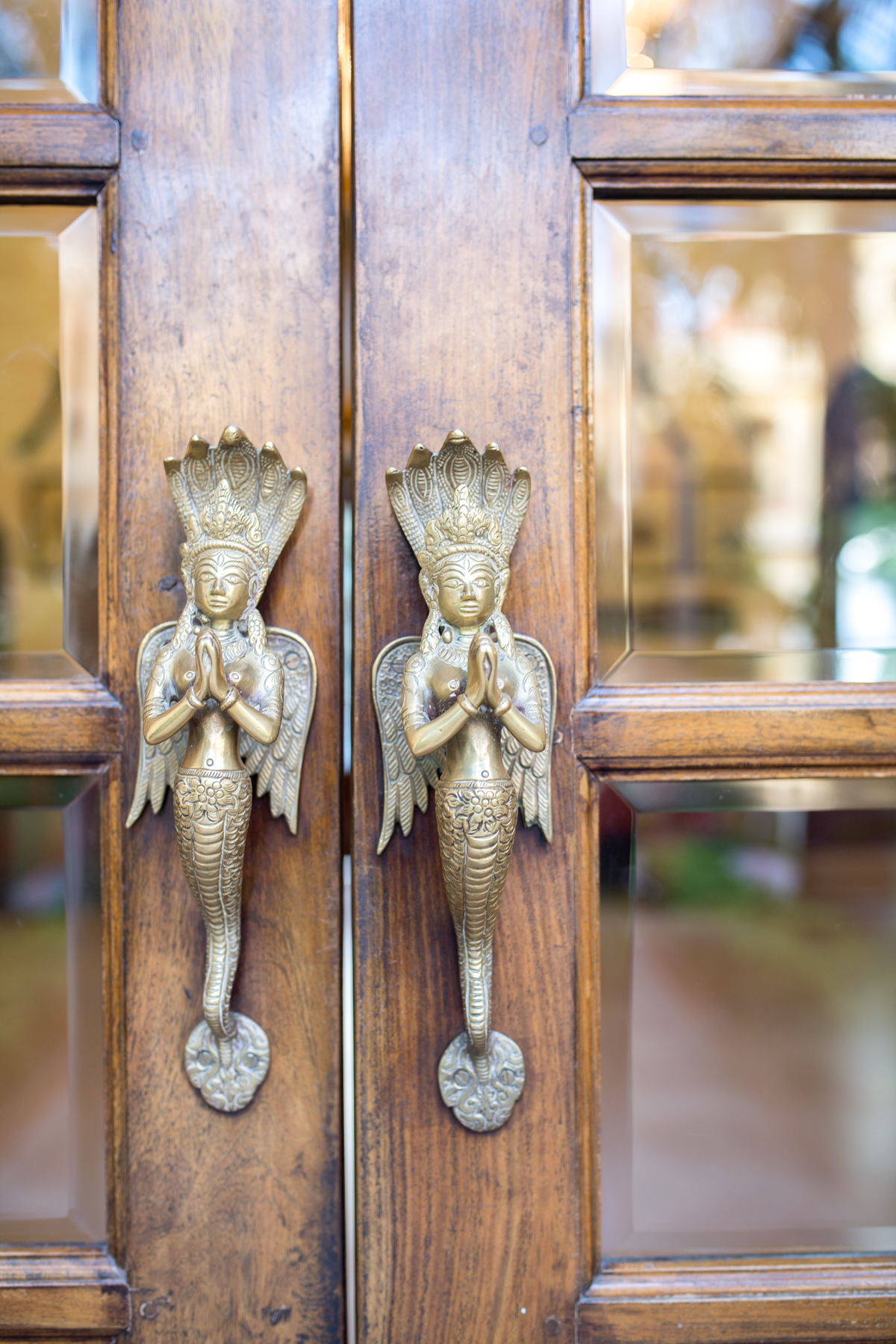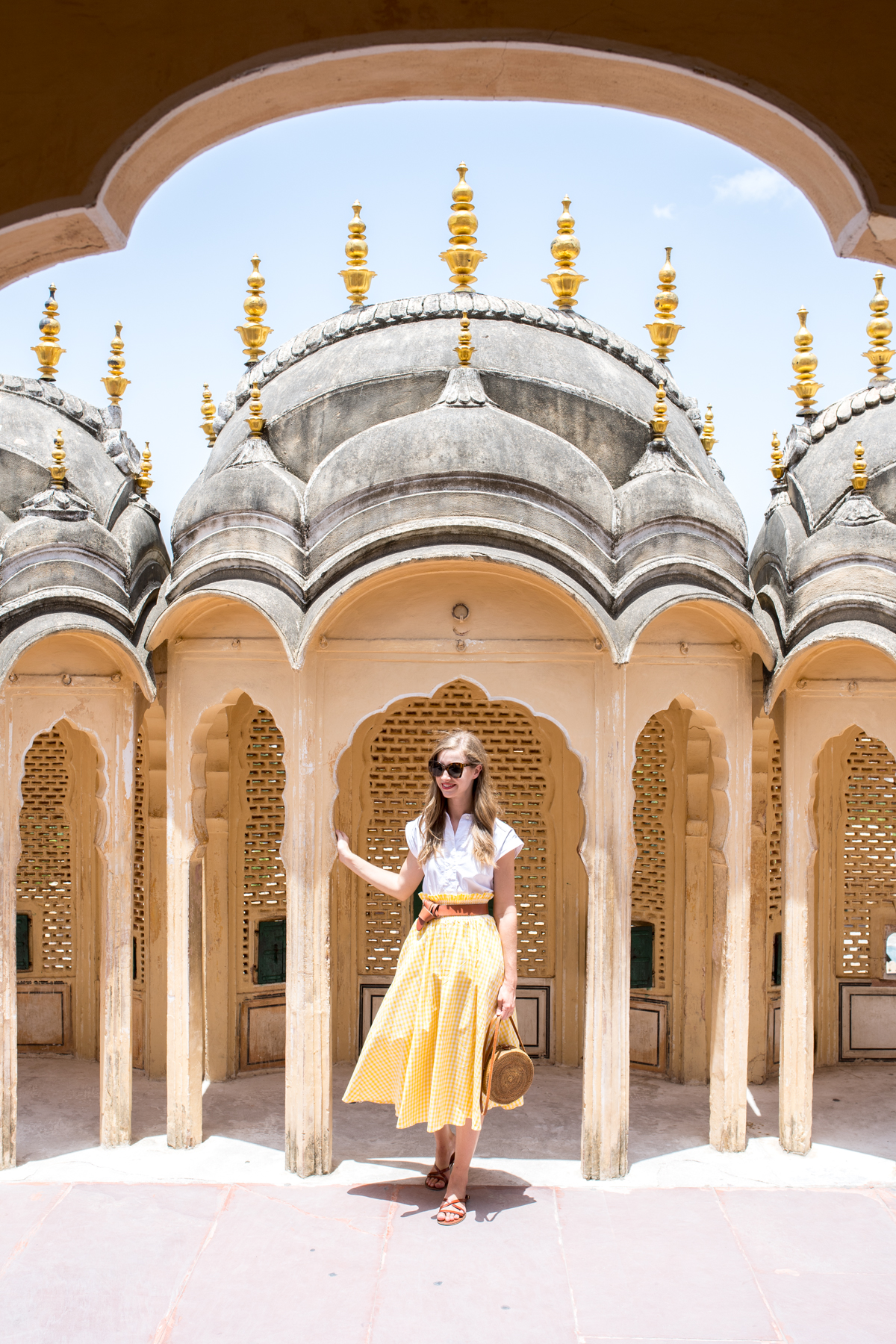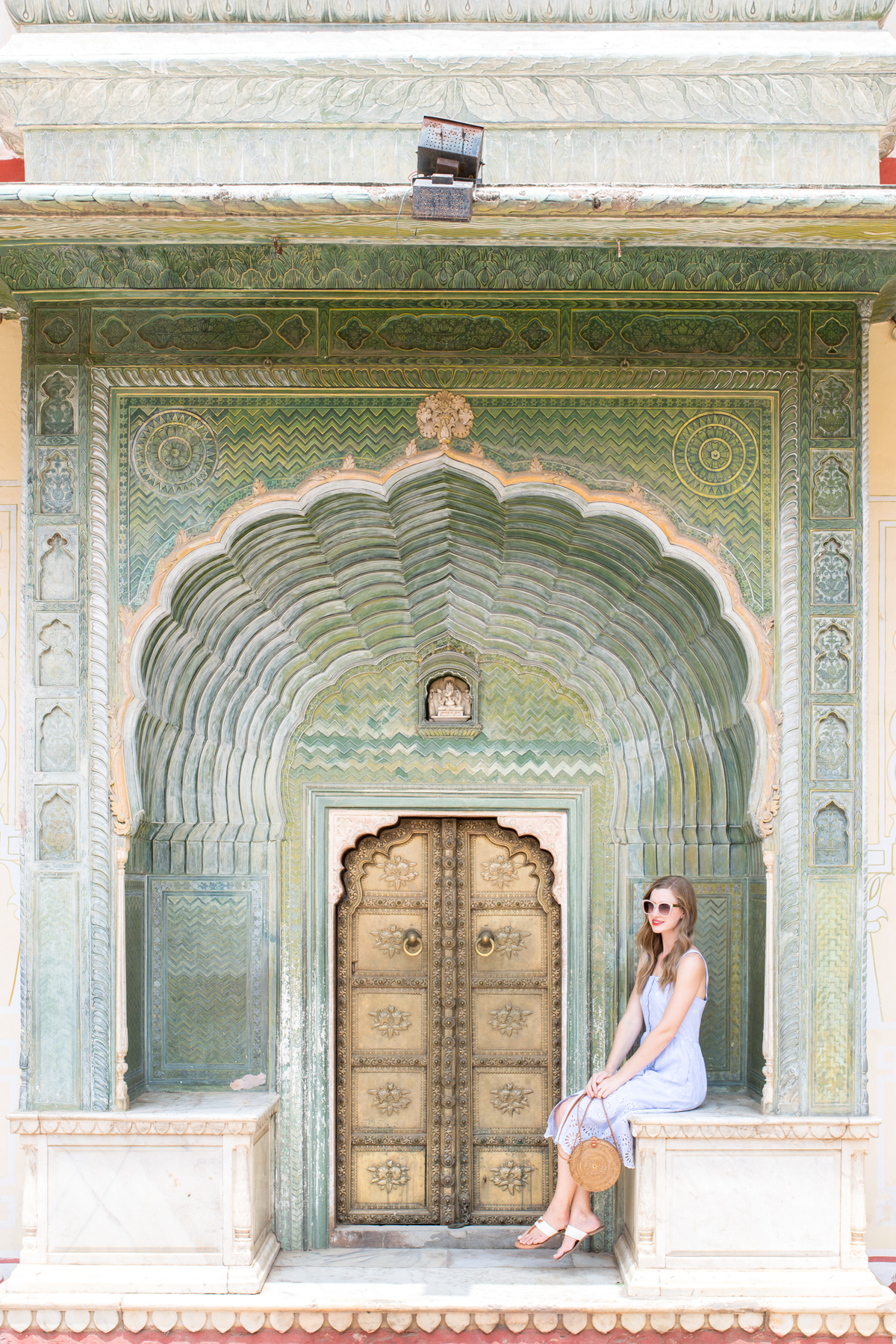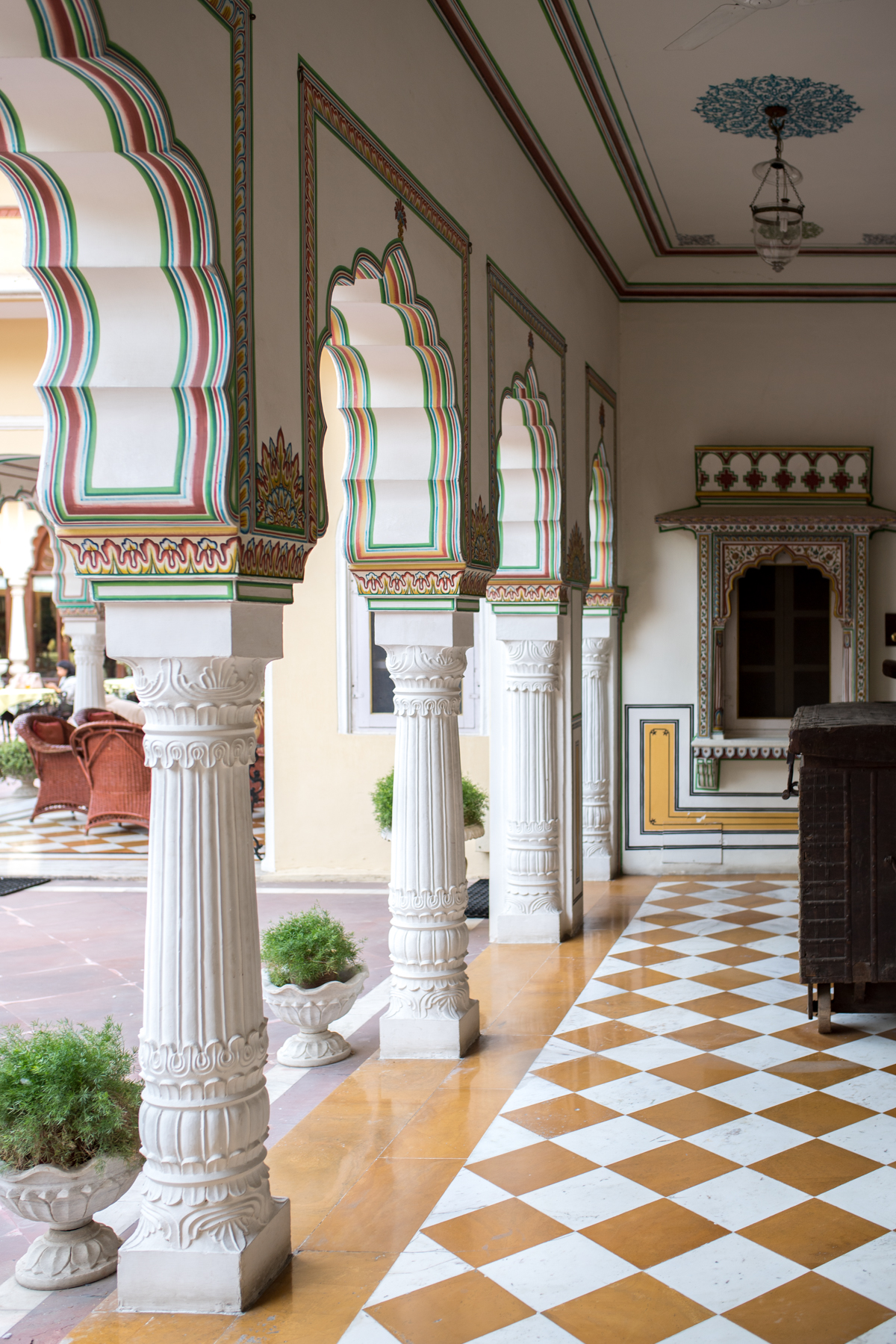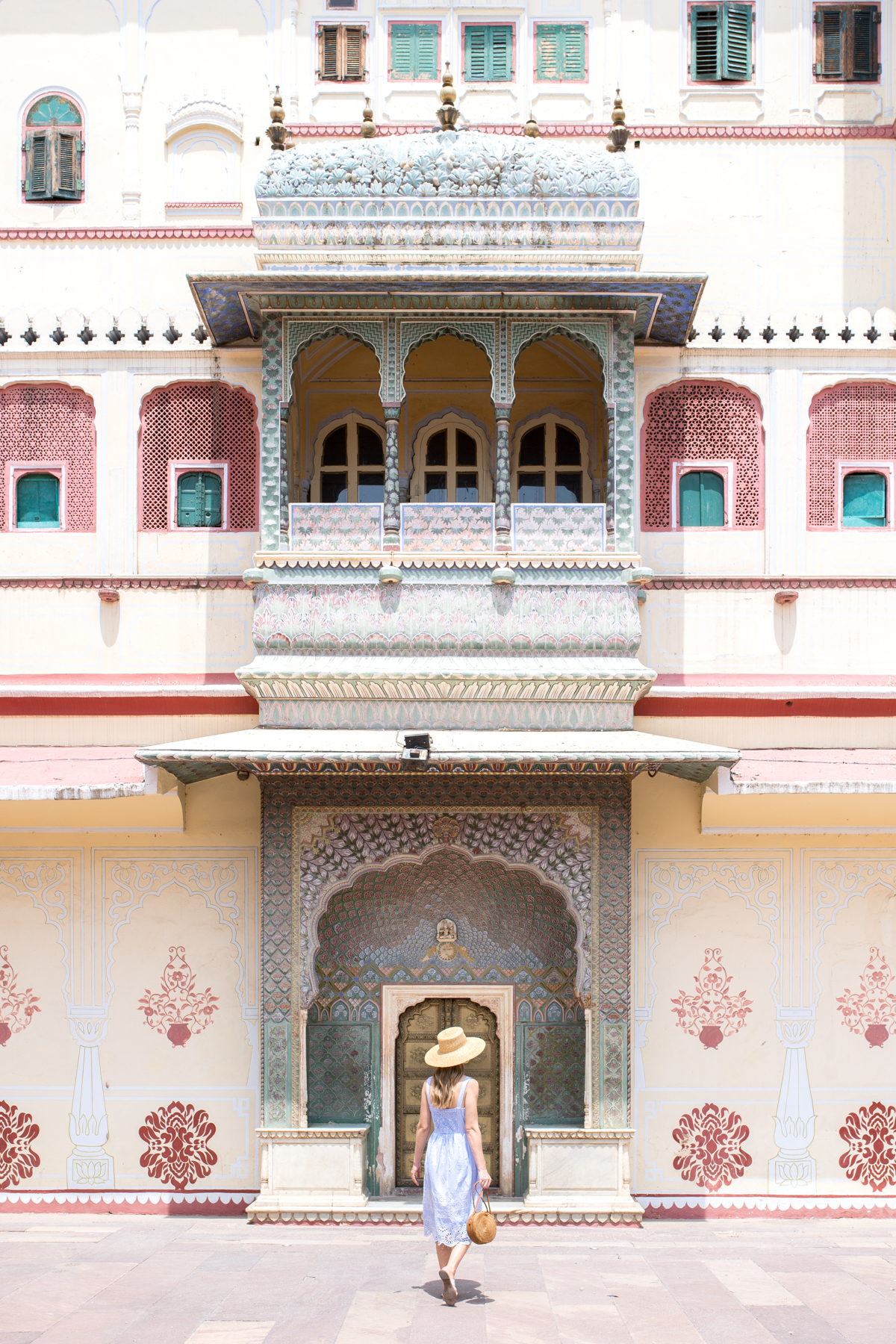Japuir will forever reign as the most photogenic city I’ve ever visited in India (and I’ve been to 10 Indian states and over 20 cities!). Jaipur is the capital of Rajasthan and boasts a long and regal history. Affectionately referred to as the “Pink City” due to the many rosy-hued buildings in the oldest part of town, Jaipur’s buildings were first painted pink in 1876 to welcome the Prince of Wales, who was later crowned King Edward VII.
Admittedly, most of our recommendations will rank at the top of any “best of” list covering Jaipur, but they are just. that. good. Don’t miss the City Palace, Hawa Mahal and Amber Fort to admire some of the best Late-Mughal and Rajput architecture and decorative painting around.
The Hawa Mahal is one of the most well-recognized landmarks in the Pink City of Jaipur. Built of pink and red sandstone, the elaborate facade was designed to resemble a crown, with almost 1,000 tiny windows called “jharokhas” which allowed the women of the palace to observe festivals and daily happenings on the street below without being seen from the outside. Climb to the top of the Hawa Mahal for fantastic views of Jaipur.
Right next door is Jaipur’s City Palace. I was a little confused by the pricing structure when preparing for our visit, but so you aren’t similarly confused, at the time of this writing general admission is only 500 rupees (roughly $8 USD) per person, with a limited availability tour of some of the private areas of the palace available via guided tour for 2,500 rupees ($40) per person. General admission will give you access to the most iconic spaces, such as the four gates in the palace’s inner courtyard, Pritam Niwas Chowk, where each gate is painted to depict one of the four seasons. Diwan-i-Aam or “The Hall of Public Audience” is an ornate coral pavilion that houses both the largest sterling silver vessels in existence (created to hold water from the Ganges for Maharaja Sawai Madho Singh II to drink during his trip to England to attend Edward VII’s coronation in 1901) and an impressive set of monumental crystal chandeliers. I’ve heard that the chandeliers are often wrapped up to prevent them from getting dusty so we were fortunate to visit when they were uncovered and at their glittering best! The Amber Fort Palace, just north of Jaipur is a fantastic place for sunset hikes along the miles of fortress walls.
We loved our experience staying in a restored haveli in Delhi and sought out a similar hotel for our time in Jaipur, staying at Alsisar Haveli. The property was beautiful, a mansion owned by the “Kachawa” clan of Rajputs who still reside in a wing of the property today. (Many members of the family are immortalized in a set of oil portraits hung high in the dining hall - gorgeous paintings that I’d love to take home with me! Visit and you’ll see what I mean!) I highly recommend picking a hotel with a pool while in Jaipur because I guarantee you’ll want to dive in after returning from a hot day spent climbing the myriad stairs at the Amber Fort, or wandering the grounds of the City Palace. The pool at Alsisar was especially elegant surrounded by loungers under arched pavilions with silver peacock mosaics lining the walls.
If you don’t stop to see the ancient step well near Neemrana I’d encourage you to visit the gorgeous diamond step well, Chand Baori, outside of Jaipur, which is a photographer’s dream. On the shopping front, in addition to favorites such as Fabindia and Anokhi, Jaipur is home to ethical clothier Mehera Shaw. This studio is where one of my favorite pajama brands, The Ethical Silk Company, produces their beautiful, silky soft, and (as you might have guessed) responsibly produced pajamas and robes that you may have seen me wearing here and here. We Lastly, I’ve always wanted to see a match at the Rajasthan Polo club. There weren’t any polo games on while we were in town, however polo is a popular royal sport and promises an afternoon of great fun if your itinerary aligns with their season!
This content may contain affiliate links. If you shop through my links, I may earn a commission at no cost to you. Thank you for supporting my work!
Comments
Published on 9/1/2017 by Stacie
